
Considering ISO 27001 standard to enhance your information security? This globally recognised standard is essential for businesses aiming to mitigate cyber risks and demonstrate a commitment to secure data management.
It is the gold standard for continually improving overall security management in an organisation.
This guide will walk you through the importance of ISO 27001, how it can improve your security strategies, and the steps to achieve compliance, streamlining the journey without unnecessary complexity.
Key Points
-
ISO/IEC 27001 is a comprehensive, globally recognised standard for information security management suitable for organisations of different sizes and industries, and certification indicates adherence to the standard’s management system.
-
The framework of ISO 27001 is based on the foundational principles of information security (confidentiality, integrity, availability). It consists of a systematic risk assessment process involving identifying, analysing, and implementing requisite security controls.
-
ISO 27001 certification requires a two-stage audit process and ongoing maintenance for compliance, including continual ISMS improvement and the correct management of information security risks and non-conformities.
Understanding ISO/IEC 27001 and Its Significance
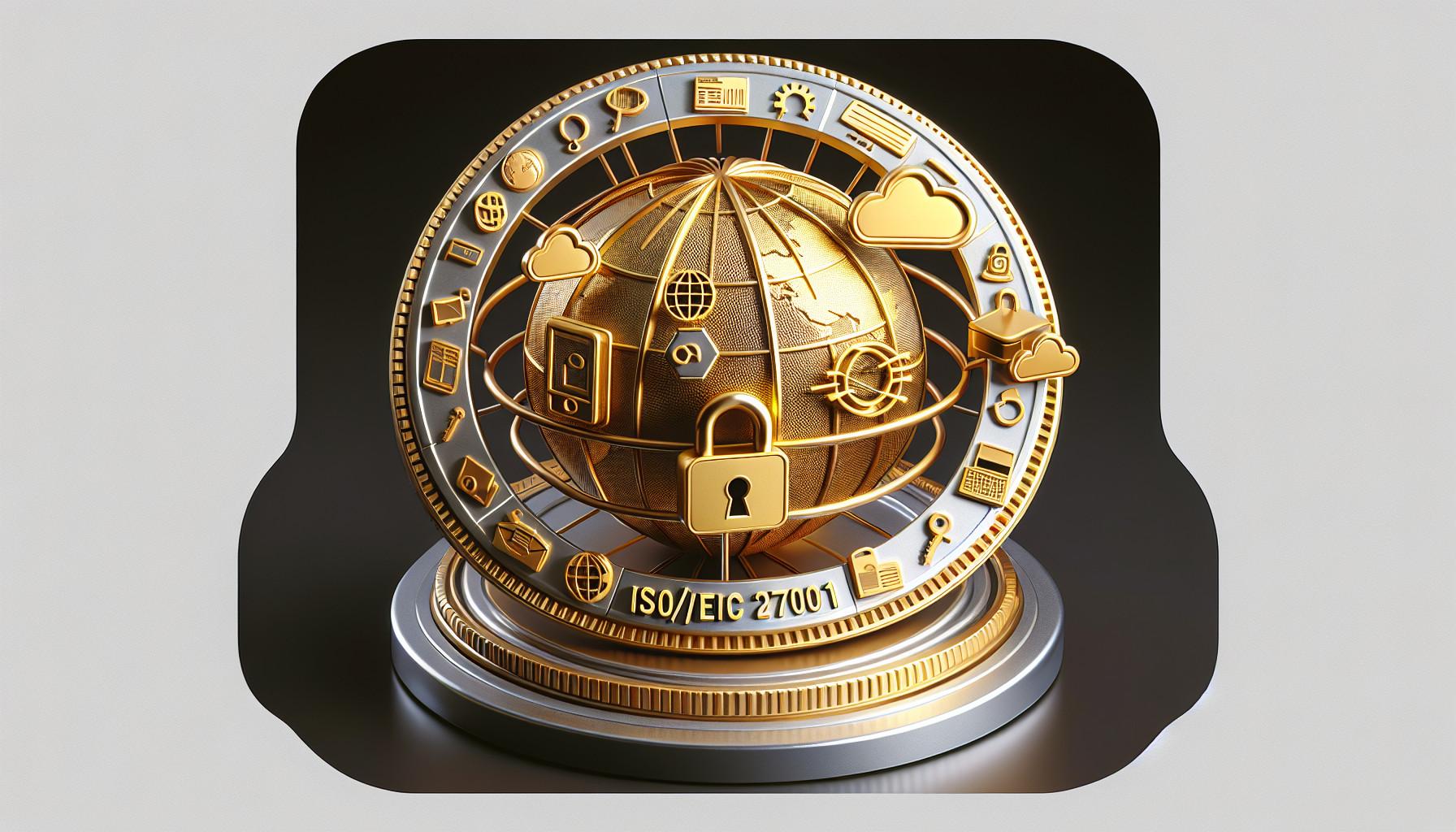
ISO/IEC 27001 is a globally recognised standard for information security management that provides a systematic and structured approach to managing security risks. It assists organisations in:
-
Establishing, implementing, operating, monitoring, reviewing, maintaining, and continually improving an ISMS.
-
This standard is not industry-specific and applies to a wide range of organisations, including commercial enterprises, government agencies, and non-profits of varying sizes across all industries globally.
-
It is particularly beneficial for highly regulated sectors like finance, healthcare, and technology, which are more susceptible to cyber threats.
While ISO/IEC 27001 compliance indicates that an organisation’s security program conforms to the standard’s specified domains and controls, certification is a step further.
Certification is a validation from an accredited certification body that the organisation’s ISMS complies with the ISO/IEC 27001 standard. It offers inherent assurances to stakeholders, including investors, and showcases the organisation’s dedication to information security management in line with ISO management system standards.
The Core Elements of ISO 27001
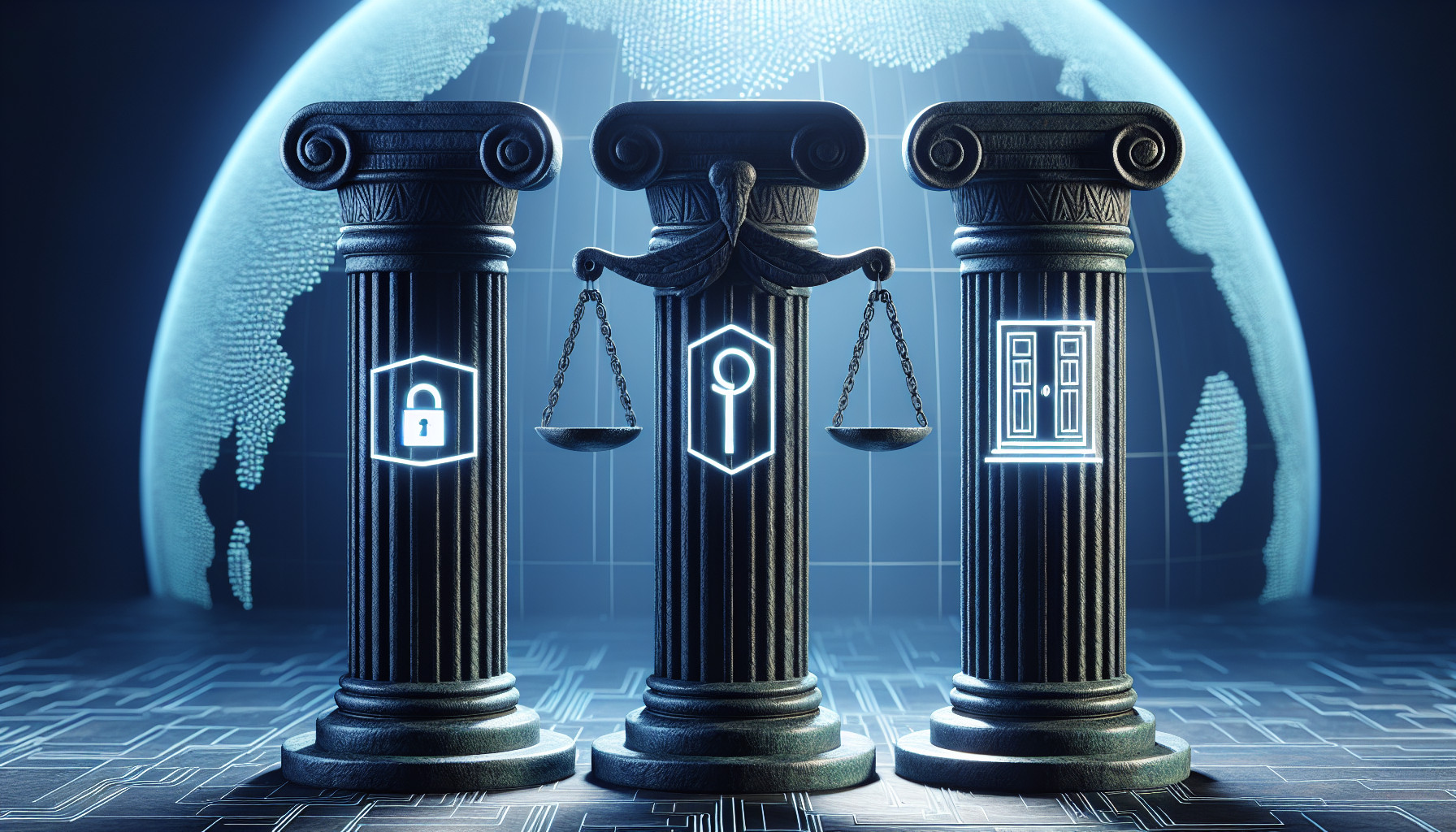
ISO 27001 is built on two fundamental components: the three pillars of information security and a structured framework for implementing an Information Security Management System (ISMS). The three pillars of information security are:
-
Confidentiality: ensures that information is accessible only to those authorised to access it
-
Integrity: ensures the accuracy and completeness of the information
-
Availability: ensures that information is accessible to authorised users when needed.
These pillars are the bedrock of any robust information security management system.
The structured framework of ISO 27001 incorporates the analysis of the organisation’s information assets, identifying threats and vulnerabilities associated with those assets, and evaluating the potential impact of a security breach on the information assets. This forms a part of the information security risk assessment process.
The standard emphasises a systematic approach to managing risks by identifying the risk areas and then methodically addressing them by applying security controls or safeguards, the core of the risk and management review process.
The Three Pillars of Information Security
Confidentiality, integrity, and availability, often called the CIA triad, form the cornerstone of information security. Confidentiality ensures that data is not disclosed to unauthorised individuals or systems.
CIA is crucial in maintaining the trust of customers and stakeholders and is especially important for organisations dealing with sensitive information systems, customer data, intellectual property, or trade secrets.
Integrity ensures that data is:
- accurate
- reliable
- guarded against unauthorised modification, deletion, or fabrication
- preserves the trustworthiness and consistency of the data over its entire lifecycle.
Availability, the final pillar, ensures that authorised users have reliable and timely access to data and resources when needed through proper access control. This is particularly critical in maintaining business continuity and delivering services without interruption.
Structure of the ISO 27001 Standard
ISO 27001 is structured into ten main sections. These sections cover:

- Essential requirements
- Controls
- Objectives for Effective Information Security Management
This structure aids organisations in:
- Developing an ISMS
- Implementing an ISMS
- Maintaining an ISMS
- Continually improving their ISMS
A significant part of this structure is Annex A. This annex includes a list of 114 controls for information security management. These controls and management system clauses form a solid framework for ISMS implementation and maintenance. Conduct internal audits to ensure management reviews these controls’ effectiveness and standard compliance. Organisations can refer to ISO/IEC 27002 for detailed information on these controls.
Navigating the Annex A Controls
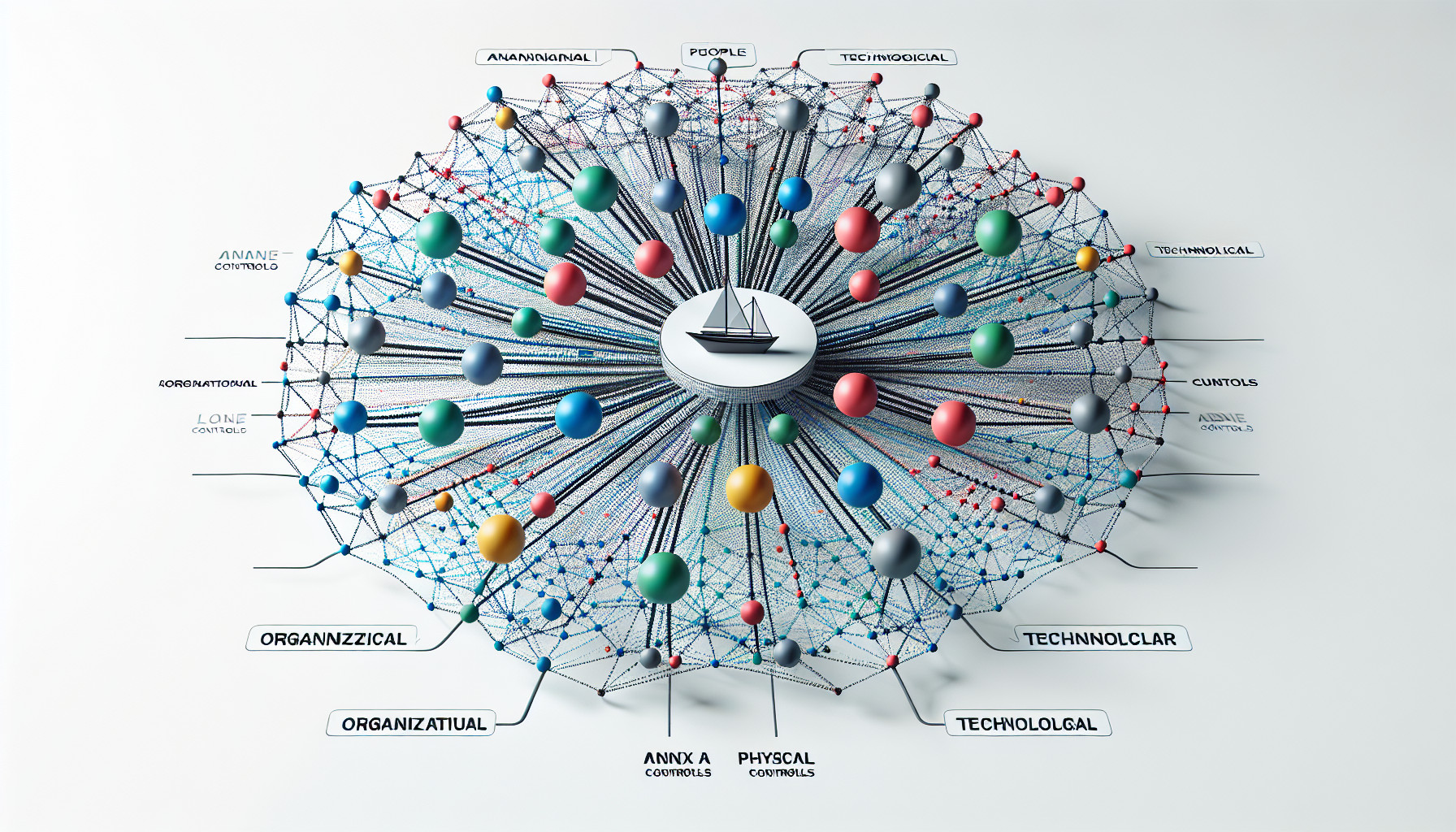
Annex A of ISO 27001 is an extensive compilation of security controls revised to encompass a streamlined and comprehensive set of 93 controls to more effectively correspond with the contemporary cybersecurity and information security landscape. However, it’s important to note that organisations don’t need to implement all control objectives in Annex A. Organizations should consider them as a list of control options based on their specific risk assessment and management needs.
The new controls in Annex A encompass essential areas such as:
- Cloud services
- ICT readiness for business continuity
- Threat intelligence
- Physical security monitoring
These controls have been designed to address the concerns of interested parties in information and communications security.
These controls focus on aspects not addressed in earlier versions or have recently gained increased relevance. An organisation is advised to thoroughly evaluate its information risks to select relevant controls from Annex A that can efficiently manage and reduce the identified risks.
Crafting Robust Information Security Objectives Before Security controls
ISO 27001 facilitates the creation of compelling information security objectives by delineating the requirements necessary for the inception, execution, maintenance, and perpetual enhancement of an ISMS. This structure ensures the establishment of measurable objectives that align with the organisation’s information security requirements.
The implementation guidance for risk management strategy within ISO 27001 is paramount in establishing information security objectives.
It encompasses:
- The identification, assessment, and mitigation of risks to the organisation’s information
- Guiding the identification of essential security controls to address potential incidents
- Aligning these with the security objectives.
ISO 27001 guides organisations to establish security objectives. These objectives should align with the organisation’s risk tolerance. They should also meet the need to mitigate identified risks. The goals must be formally documented. A plan outlining resources, legal requirements, timelines, responsibilities, and evaluation methods should be developed. Lastly, the plan implementation should be executed.
ISO 27001 helps establish various information security objectives. Some of these objectives involve strengthening the security of user endpoint devices. Another goal is to manage privileged access rights effectively.
The standard also focuses on limiting unauthorised access to confidential information. It emphasises regulating access to source code. Lastly, it guides in implementing secure user authentication protocols and related technologies.
Comprehensive Risk Management Process with ISO 27001
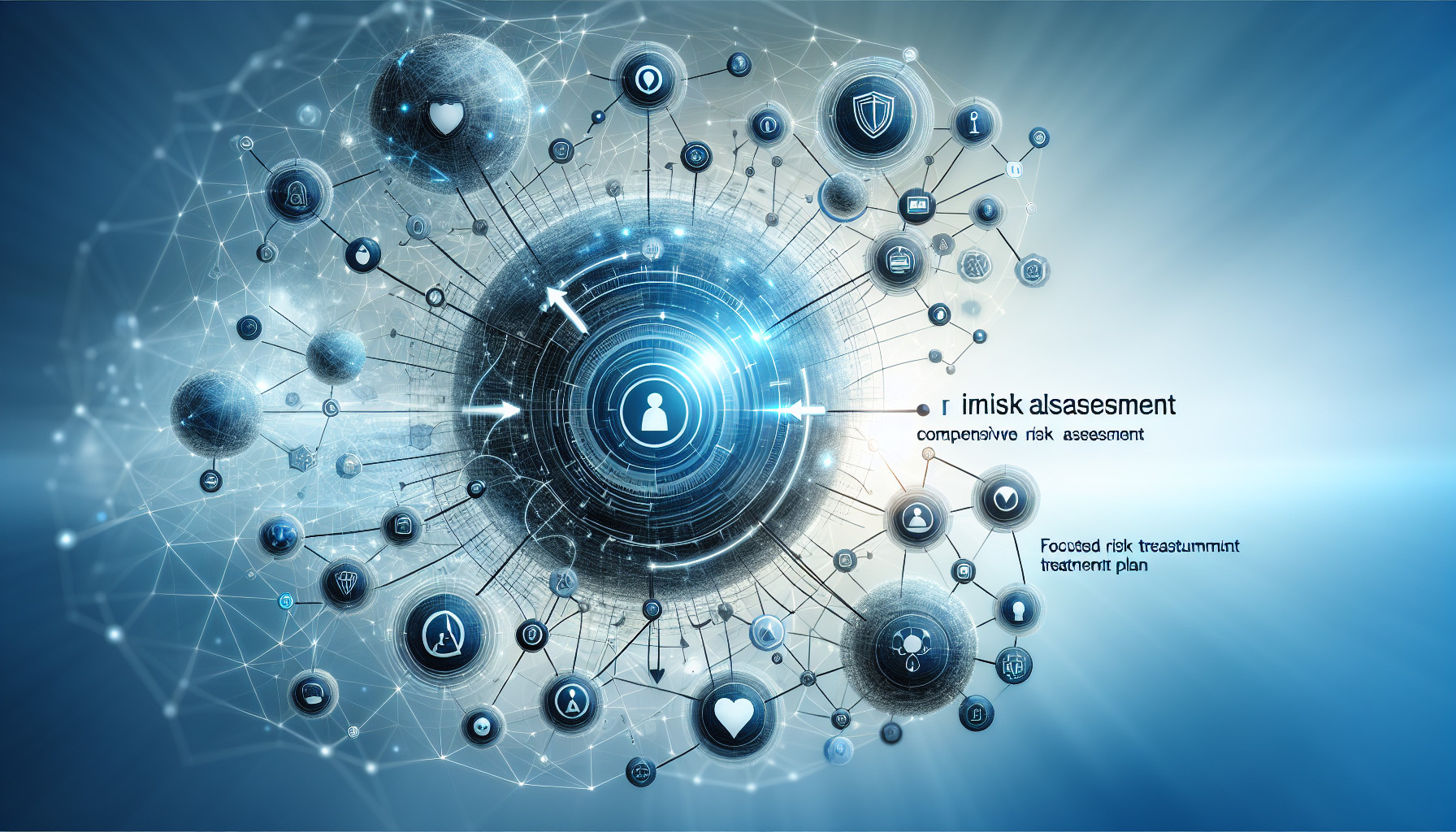
ISO 27001 2022 has incorporated a fresh emphasis on risk treatment processes, urging organisations to conduct comprehensive risk assessments and take calculated risks when the potential rewards are significant. This approach offers a more nuanced comprehension of risk management processes, highlighting the significance of evaluating risks and rewards.
-
ISO 27001 offers four strategies for dealing with risks:
- Modification: This involves changing the risk by implementing controls to reduce its likelihood or impact.
- Retention: This is the choice to accept the risk as it is, usually when the cost of mitigation exceeds the potential loss.
- Avoidance: This is the decision to eliminate the risk, often by discontinuing the activity causing the risk.
- Sharing: This involves transferring or sharing the risk with other parties, often seen in outsourcing or insurance scenarios.
-
It also provides two strategies for dealing with opportunities:
- Enhancement: This involves maximising the positive impact of opportunities.
- Exploitation: This involves making full use of the opportunities available.
-
These strategies form a comprehensive approach to ensure the risk management process works, enabling organisations to respond to the dynamic landscape of information security effectively.
Conducting Thorough Risk Assessments
The steps included in the process of conducting a risk assessment by ISO 27001 involve:
- Establishing a risk assessment framework
- Creating a list of information assets
- Identifying risks
- Evaluating the impact of risks
ISO 27001 provides an exhaustive risk assessment procedure that includes:
- Identification, analysis, and evaluation of security risks
- Accurate ascertainment of controls required to address specific risks
- Evaluation of the relevance of Annex A reference control objectives and controls
- Emphasis on choosing appropriate controls to mitigate identified risks effectively
- Establishment of a comprehensive approach to information security
This systematic approach to information security risk management ensures that organisations thoroughly understand their information security risks and can implement the necessary controls to mitigate them.
ISO 27001 guides the identification of information security risks by providing a structured framework. This framework involves the analysis of the organisation’s information assets, identifying threats and vulnerabilities associated with those assets, and evaluating the potential impact of a security breach on the information assets.
ISO 27001 mandates that organisations identify, analyse, and assess information security risks to establish suitable controls and mitigation strategies. This systematic approach facilitates the management of risks associated with the organisation’s information assets.
In this regard, organisations like Cyphere can provide valuable support by:
- Combining various needs of an organisation with practical risk mitigation steps
- Offering expertise and experience in information security
- Assisting in the implementation of ISO 27001 standards
- Conducting risk assessments and providing recommendations for controls and mitigation strategies
By partnering with a trusted organisation like Cyphere, you can ensure that your information security risks are effectively managed and your organisation complies with ISO 27001 standards.
Developing a Focused Risk Treatment Plan
A risk treatment plan by ISO 27001 entails the development of a thorough plan to implement controls aimed at reducing the probability or impact of risks. This process includes identifying the essential security controls to mitigate the identified risks.
For example, organisations can benefit from the support of companies like Cyphere’s risk-based approach, which ensures thorough gap analysis and ISMS implementation aligned with the ISO 27001 approach.
Moreover, it is also important to note that the successful rectification and prevention of non-conformities play a significant role in the overall enhancement and maintenance of the Information Security Management System (ISMS). This highlights the importance of taking a comprehensive and focused approach to risk treatment business continuity planning.
Achieving Compliance: The ISO 27001 Requirements
To comply with ISO 27001, organisations must meet several rigorous requirements. These include:

- Defining the organisational context
- Demonstrating leadership commitment
- Conducting planning and providing support
- Implementing operational processes
- Evaluating performance
- Continuously improving the ISMS
ISO 27001 Requirement 5.2 mandates a top management-approved information security policy. It should cover areas such as information transfer and secure configuration. It should also address user endpoint device management controls and information security incident handling.
Leadership and commitment are vital for the organisation’s information security management system. Top management should create a high-level policy for information security. They should also assign information security roles with clear roles and responsibilities. They should also allocate necessary resources and endorse ongoing enhancement of the information security management systems.
ISO 27001 Requirement 5.3 specifies a clear definition and allocation of roles and responsibilities. The organisation should communicate these roles effectively. This ensures that personnel understand and fulfil their obligations.
The Path to ISO 27001 Certification
Embarking on the journey towards ISO 27001 certification is a challenging yet rewarding process.
This process involves two key stages of audit:
-
The Stage 1 audit is preliminary, checking if the organisation’s ISMS aligns with the ISO 27001 standard. The outcome of this audit is either a recommendation for Stage 2 audit readiness or a list of non-conformities that need to be addressed.
-
The Stage 2 Audit thoroughly evaluates the ISMS’s implementation and effectiveness. If an organisation fails this audit, it must address the identified non-conformities before proceeding.
This could involve either resubmitting for a complete audit or undergoing a specific review to address the non-conformity. This two-stage audit process ensures management determines that the organisation’s ISMS complies with the ISO 27001 standard and effectively manages information security risks.
The journey to ISO 27001 certification is demanding, but the benefits of achieving this certification are manifold. It enhances the organisation’s information security posture and boosts its reputation among senior management and stakeholders, fostering trust and confidence in its senior management’s commitment to secure data management.
Preparing for Certification Audits
Organisations must scrupulously conduct a comprehensive gap analysis to prepare for certification audits to pinpoint areas where their ISMS does not meet ISO 27001 standards. This gap analysis allows the organisation to rectify non-conformities and ensure compliance with the standard before contacting certification bodies to start the certification process.
Remote stage 1 audits offer a cost-effective method to identify potential gaps or non-conformities in the organisation’s ISMS without incurring travel costs and time. These audits play a crucial role in preparing for subsequent certification audits or audits by offering insights into the necessary adjustments to meet the standard’s requirements.
Organisations can benefit from the support of companies like Cyphere, which offers:
- Thorough gap analysis
- Not just a tick-in-the-box approach
- Expertise in process and governance
- Ensuring that the SMB customers’ operations are in order
- Setting up their future roadmap to ISO 27001
Maintaining Certification Through Continual Improvement
To maintain ISO 27001 certification, organisations must consistently enhance their ISMS. They must monitor performance and correct non-conformities. This ensures the ISMS stays effective and matches evolving security threats, changes and business objectives.
ISO 27001 suggests performance monitoring methods, such as ISMS performance assessment and ISMS efficacy review. These two performance evaluation methods help measure security strategies’ effectiveness and identify improvement areas.
Non-conformities should be handled according to ISO 27001 by implementing corrective actions. This might involve improving communication, documentation, and training to ensure compliance with information security standards. Correcting and preventing non-conformities is crucial in enhancing and maintaining the Information Security Management System (ISMS).
Leveraging Information Security Management Systems for Organizational Benefit
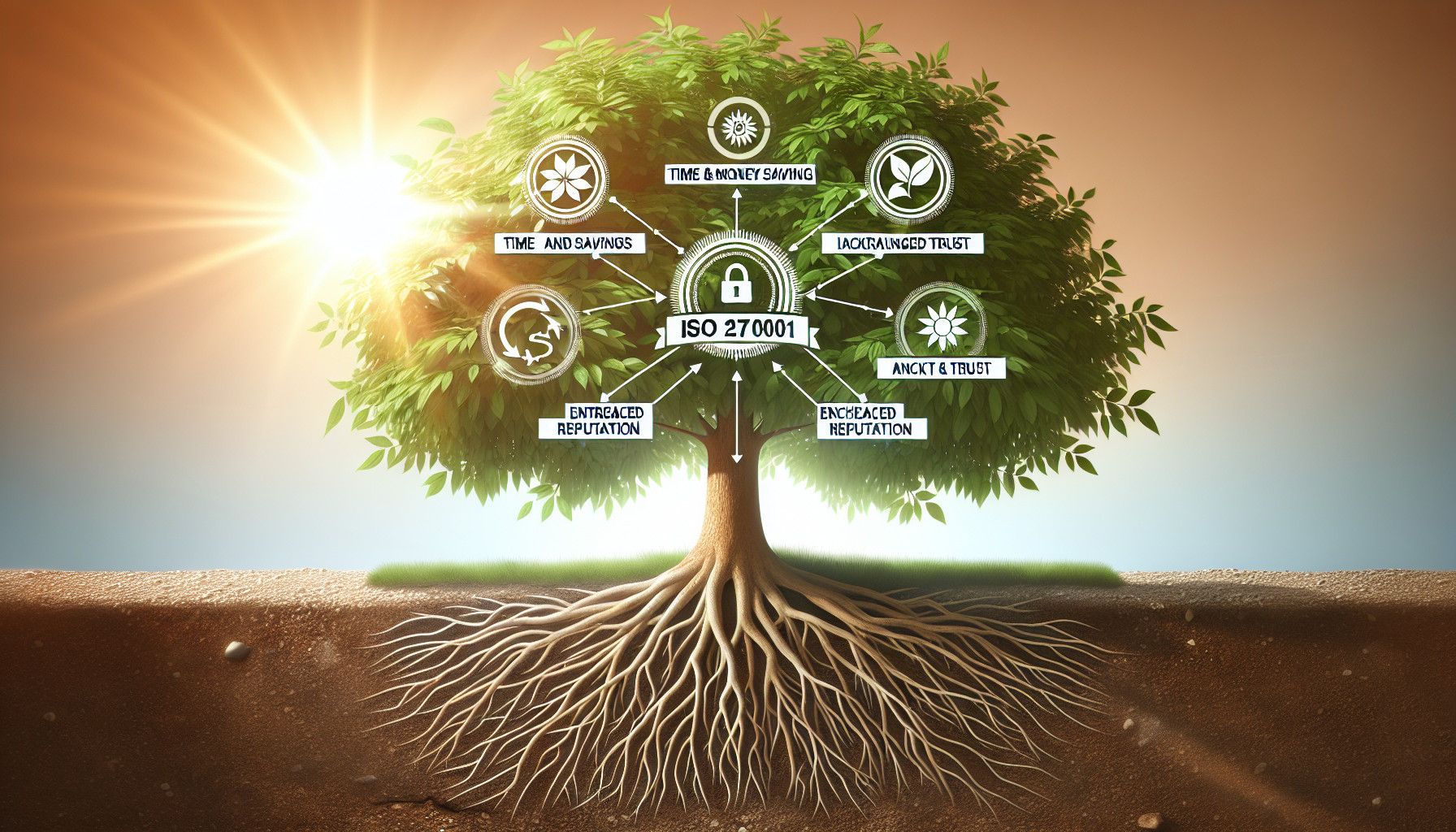
Obtaining ISO 27001 Certification has multiple benefits, including risk reduction in information security, potential financial savings, and increased operational efficiency from implementing a comprehensive ISMS.
Achieving ISO 27001 certification not only reinforces an organisation’s security posture but also enhances its reputation among stakeholders and interested parties. The certification is a clear signal to stakeholders and third parties. It shows that an organisation can protect sensitive data, managing valuable information assets and intellectual property through a standardised and externally audited process.
ISO 27001 can give organisations a competitive edge. Trust is crucial in a world where cybersecurity threats and data breaches are common. Customers and partners are more likely to trust organisations that prioritise information security. Therefore, ISO 27001 certification can open up new business opportunities. It can also enhance customer trust and loyalty.
Aligning ISO 27001 with Other International Standards
ISO 27001 isn’t a lone ranger. It’s a jolly good mate to other international standards. Think of it as a critical player in a team of security standards, each complementing the other. Let’s dive into how it works with NIST CSF and SOC2.
The NIST Cybersecurity Framework (CSF), from across the pond, is a top-notch guide for managing and reducing cybersecurity risk. ISO 27001 and NIST CSF are like two peas in a pod. They both focus on risk management and have a similar structure. By implementing ISO 27001, you’re already on the right path to align with NIST CSF.
Then, we have SOC2. This American standard is all about controls at service organisations, especially those dealing with data. It’s more specific than ISO 27001, focusing on five trust principles – security, availability, processing integrity, confidentiality, and privacy protection. But here’s the good news: if you’re ISO 27001 compliant, you’ve already got a head start on SOC2.
In short, ISO 27001 plays nicely with other standards. It’s like having a versatile player on your team, ready to adapt and work with others. So, whether you’re going for NIST CSF, SOC2, or another standard, having ISO 27001 in your corner is competent. It’s all about making your data security top-notch and showing your customers you mean business.

Cyber attacks are not a matter of if, but when. Be prepared.
Box-ticking approach to penetration tests is long gone. We help you identify, analyse and remediate vulnerabilities so you don’t see the same pentest report next time.
Tailoring ISO 27001 Information Security Management System to Your Business Context
While ISO 27001 provides a comprehensive and internationally recognised framework for information security management, it’s crucial to understand that its implementation needs to be adapted to the specific business context of an organisation.
Factors such as industry, size, risk appetite, and specific business needs should be considered while implementing ISO 27001. For instance, small businesses can streamline the documentation requirements and prioritise the most pertinent information security controls.
ISO 27001 can also be customised to meet the unique needs of specific industries. Here are some examples:
- Finance sectors can implement stringent access controls and encryption.
- Healthcare sectors can ensure robust data integrity measures.
- IT companies can employ advanced information technology solutions.
This tailoring process ensures that the implemented ISMS is effective and aligned with the distinct characteristics and needs of the organisation.
Responding to Security Incidents with ISO 27001
In a security incident, a robust and well-planned response is crucial to mitigate damage, recover from the incident, and prevent future occurrences. ISO 27001 offers directives for planning incident responses, helping organisations manage and recover effectively from information security incidents.
ISO 27002 is a supplementary standard that provides detailed guidelines for implementing the security controls outlined in ISO 27001. It is a practical guide, offering in-depth insights and recommendations to help organisations establish robust and adequate security measures.
The standard includes specific controls related to incident response in Annex A Control 5.24, emphasising the establishment of efficient processes, adequate planning, and clearly defined roles and responsibilities.
When information security incidents occur, ISO 27001 recommends the following steps for incident response:
-
Assess and classify the incident
-
Gather evidence
-
Determine the root cause
-
Inform authorised regulators if necessary
-
Implement measures to prevent future incidents
This structured approach to cyber attacks ensures that organisations are prepared to manage and recover from any information security incident effectively.
Summary
In the era of digitalisation, information security is no longer optional but necessary for organisations of all sizes and industries. ISO/IEC 27001 provides a comprehensive and structured framework for implementing an effective ISMS, helping organisations protect their valuable data and demonstrate their commitment to information security.
Achieving ISO 27001 certification helps mitigate risks and provides a competitive advantage by enhancing an organisation’s reputation among stakeholders.
The standard’s adaptability allows organisations to tailor its implementation to their business context and regulatory requirements, making it a versatile tool for information security management. As we move further into the digital age, ISO 27001 continues to be a guiding light, helping organisations navigate the evolving landscape of information security.
Frequently Asked Questions
What are ISO 27001 standards?
ISO 27001 is the international standard for information security, providing a framework and best practices to establish, implement, and manage an information security management system (ISMS). It addresses people, processes, and technology to help organisations effectively manage their information security.
What is the ISO 27001 code?
ISO 27001 is an international standard published by the International Organization for Standardization (ISO) and the International Electrotechnical Commission (IEC) in 2005. It is the world’s best-known standard for information security management systems (ISMS) and defines an ISMS’s requirements.
What is ISO 27001 in the UK?
ISO 27001 is an international standard that specifies the requirements for an ISMS (information security management system) to help organisations manage their security risks. Certification to this standard is recognised worldwide as an indication of alignment with information security best practices.
What is ISO 27001 in a nutshell?
ISO 27001 is the international standard for information security, requiring organisations to identify risks and choose appropriate controls. This encompasses 114 controls across 14 domains.
What is the significance of ISO/IEC 27001?
ISO/IEC 27001 is significant because it offers a robust framework for implementing an Information Security Management System (ISMS), which helps organisations protect their data and demonstrate their commitment to information security.
Harman Singh is a security professional with over 15 years of consulting experience in both public and private sectors.
As the Managing Consultant at Cyphere, he provides cyber security services to retailers, fintech companies, SaaS providers, housing and social care, construction and more. Harman specialises in technical risk assessments, penetration testing and security strategy.
He regularly speaks at industry events, has been a trainer at prestigious conferences such as Black Hat and shares his expertise on topics such as ‘less is more’ when it comes to cybersecurity. He is a strong advocate for ensuring cyber security as an enabler for business growth.
In addition to his consultancy work, Harman is an active blogger and author who has written articles for Infosecurity Magazine, VentureBeat and other websites.












